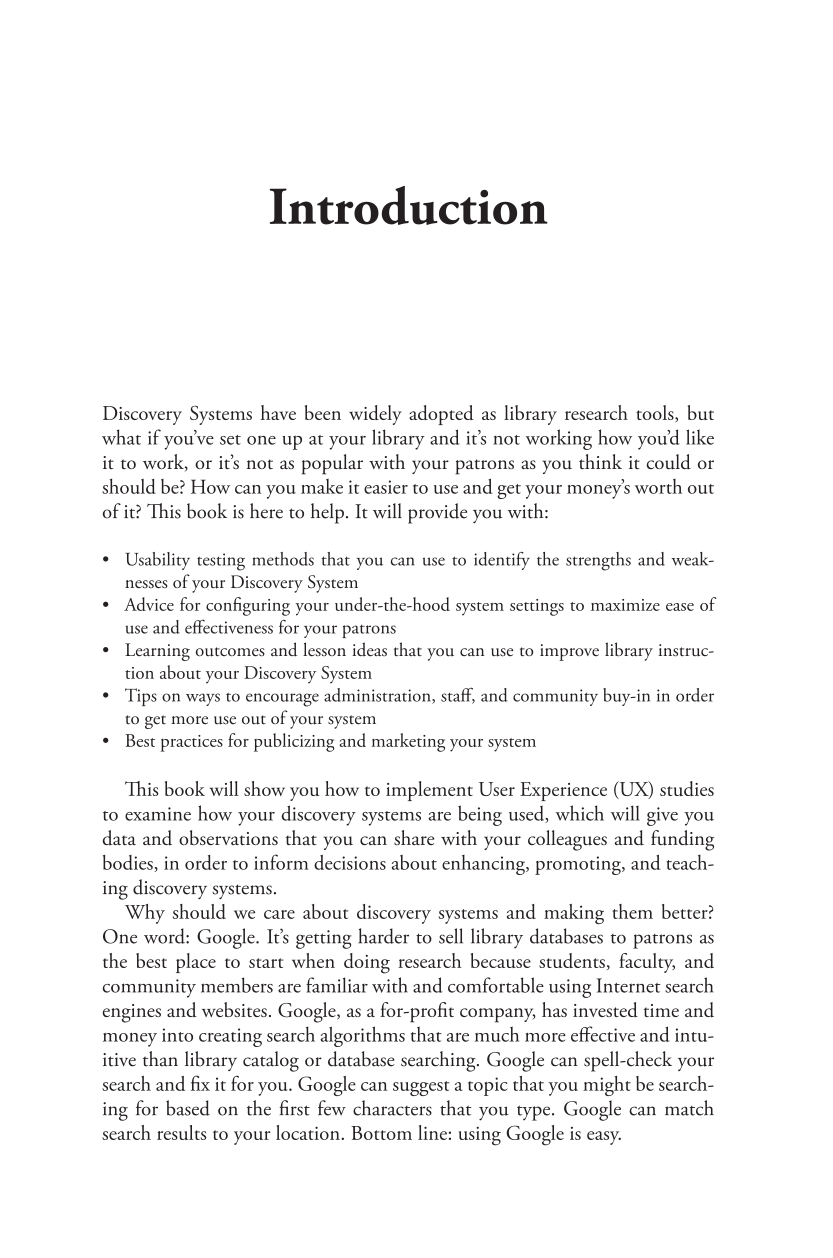Discovery Systems have been widely adopted as library research tools, but
what if you’ve set one up at your library and it’s not working how you’d like
it to work, or it’s not as popular with your patrons as you think it could or
should be? How can you make it easier to use and get your money’s worth out
of it? This book is here to help. It will provide you with:
• Usability testing methods that you can use to identify the strengths and weak-
nesses of your Discovery System
• Advice for configuring your under-the-hood system settings to maximize ease of
use and effectiveness for your patrons
• Learning outcomes and lesson ideas that you can use to improve library instruc-
tion about your Discovery System
• Tips on ways to encourage administration, staff, and community buy-in in order
to get more use out of your system
• Best practices for publicizing and marketing your system
This book will show you how to implement User Experience (UX) studies
to examine how your discovery systems are being used, which will give you
data and observations that you can share with your colleagues and funding
bodies, in order to inform decisions about enhancing, promoting, and teach-
ing discovery systems.
Why should we care about discovery systems and making them better?
One word: Google. It’s getting harder to sell library databases to patrons as
the best place to start when doing research because students, faculty, and
community members are familiar with and comfortable using Internet search
engines and websites. Google, as a for-profit company, has invested time and
money into creating search algorithms that are much more effective and intu-
itive than library catalog or database searching. Google can spell-check your
search and fix it for you. Google can suggest a topic that you might be search-
ing for based on the first few characters that you type. Google can match
search results to your location. Bottom line: using Google is easy.
Introduction






















































































































































